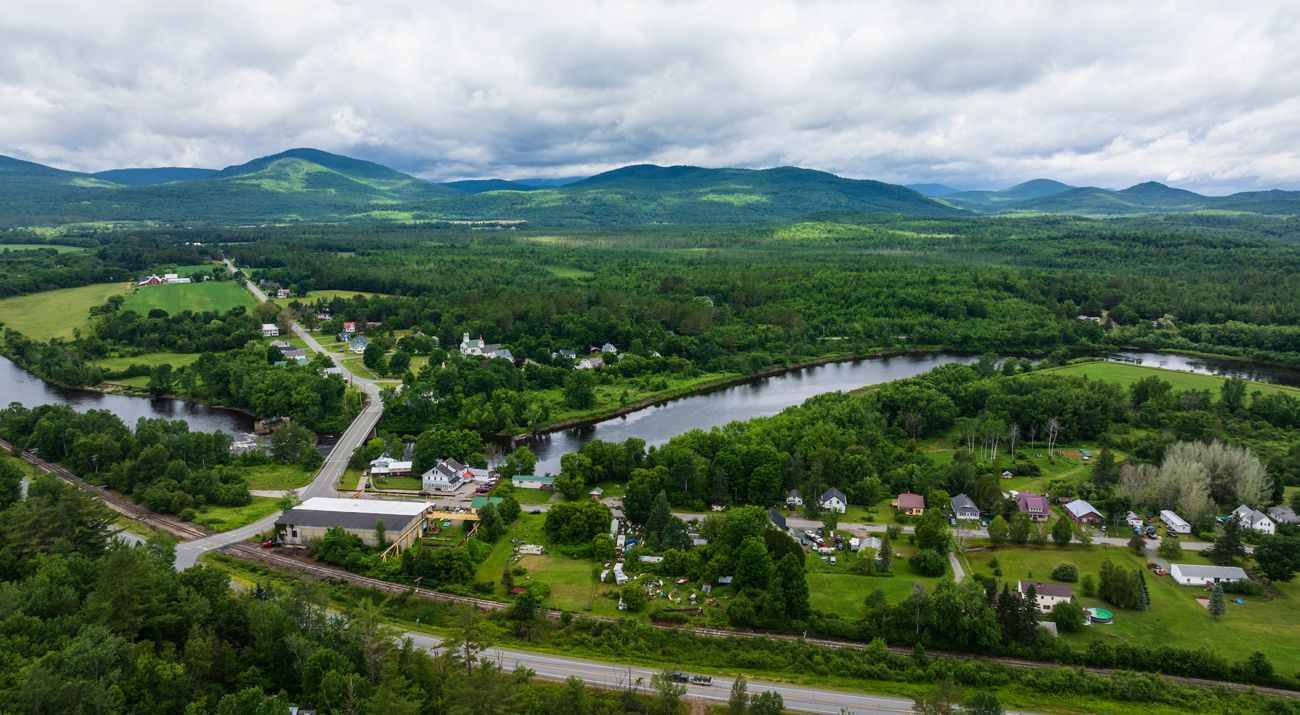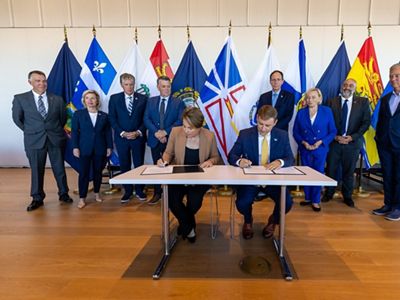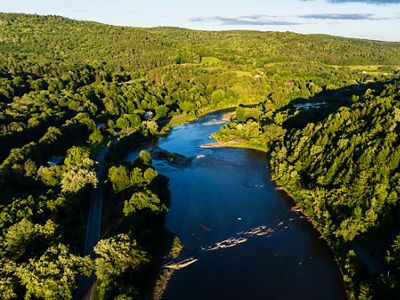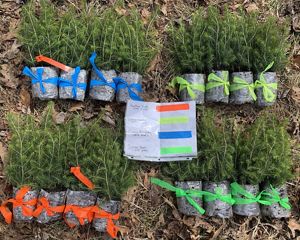Momentum Grows for Ecological Connectivity Efforts in Northeastern North America

A major milestone for conserving and restoring landscape connectivity was reached on September 10 in Boston, when the New England Governors and Eastern Canadian Premiers (NEG-ECP) adopted a new resolution reaffirming their commitment to collaborate across borders on ecological connectivity, adaptation to climate change, and biodiversity conservation.

The six New England states and five Eastern Canadian provinces of the NEG-ECP have been working cooperatively since 1973 to address shared regional interests.
In 2016, the Governors and Premiers in office at the time adopted NEG-ECP Resolution 40-3, a visionary statement that called for their agencies to work together to conserve and restore terrestrial and aquatic ecological connectivity, including through specific actions such as land protection and stewardship, land use planning, and siting and designing of transportation infrastructure to improve wildlife passage, habitat connectivity, and climate resilience.
The current Governors and Premiers adopted the new NEG-ECP Resolution 45-2 following the Northeast North America/Turtle Island Landscape Connectivity Summit, a cross-border gathering of conservation leaders and practitioners convened this past June 2024 in Montreal/Tiohtià:ke, Québec by the Staying Connected Initiative (SCI), a transboundary, public-private partnership of which The Nature Conservancy in New York serves as lead convener.

“Renewed commitment to connectivity from the NEG-ECP was one of the primary goals of the Connectivity Summit in Montreal, and we are deeply appreciative of their leadership,” said The Nature Conservancy’s Mikael Cejtin, coordinator for the Staying Connected Initiative. “This action is a strong statement on the critical importance of ecological connectivity and a commitment that states and provinces will work individually and together to maintain and restore connectivity both within and across their borders.”
The Staying Connected Initiative (SCI) partnership works to conserve, restore, and enhance ecological connectivity in the transboundary, Northern Appalachians to Acadian region and beyond. The Appalachians are a richly biodiverse, continental-scale wildlife migration and climate corridor, with the world’s largest, most-intact remaining temperate broadleaf forests in close proximity to growing population centers and transportation networks. Keeping these lands and waters ecologically resilient and connected is a key, natural climate solution that benefits communities and safeguards our collective ability to adapt and thrive in a fast-changing world.
Together, resolutions 40-3 and 45-2 provide a robust, high-level mandate for cross-boundary connectivity efforts in Northeast North America that is in sync with both federal policy in the United States and Canada, as well as the mission of the Staying Connected Initiative partnership and The Nature Conservancy.


